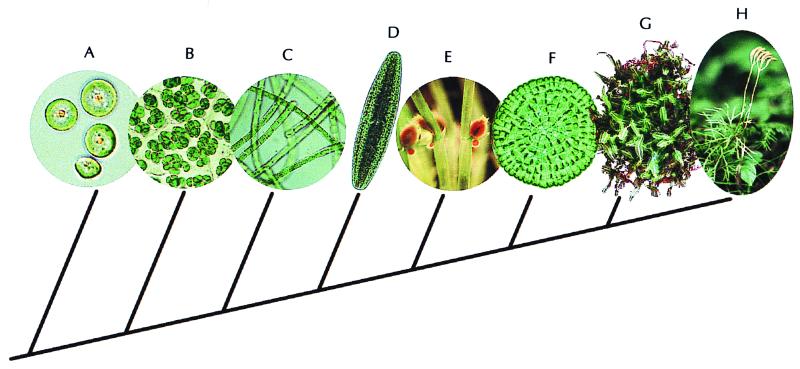Figure 4.
Increase in body complexity of charophyceans (A–F) and early divergent plants (G and H) is suggested by a phylogenetic model based on molecular data including tubulin (16) and rbcL sequences, a gene transfer event, and several intron insertion events (14). (A) Unicellular flagellate Mesostigma (whose divergence may, however, have preceded that of the charophycean lineage); (B) colonial Chlorokybus; (C) unbranched filament Klebsormidium; (D) unicellular desmid Netrium, belonging to a group (Zygnematales) that also includes unbranched filaments); (E) Chara, a branched filament with tissue at nodes (indicated by the presence of orange gametangia); (F) Coleochaete, a planar tissue-like species is shown; (G) Pallavicinia, representing liverworts, an early divergent plant group; (H) Lycopodium, an early divergent tracheophyte (vascular plant).

